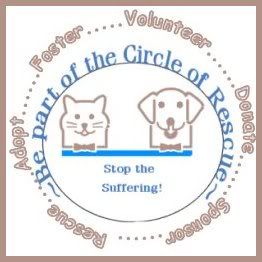
I feel so accomplished today. Besides getting to attend the Christmas parade over the weekend, I got so much done. First, the parade. We got there about an hour before the event. There was plenty of parking left right on the square, so we parked and walked across to the other side. We had decided to have coffe at the little shop to kill time until the start. The line was horrendously long and it was sweltering in the shop. I just had regular coffee, but Mom had decided that she simply must have the latte, so we were in for a bit of a wait. After everyone that was 30 minutes BEHIND us came and went, a nice man went to the counter and actually complained FOR us. Needless to say, at that point, Mom got her order post haste. Anyhow, the parade was good, but not as good as in years past. There were less floats this year and more cars and trucks representing businesses around town. Unfortunately, that wasn't very exciting. The best entry was a lighted, horse drawn carriage that carried a just married couple. It was absolutely beautiful. I'll try to get the pics posted soon. The parade lasted about an hour. After I got home, I was so exhausted that I collapsed and was asleep, before Casey ever got home from work. On Sunday, I got the cleaning finished off. The lizard tanks were rearranged, and the last minute trims were finished off. I brought my tree in late, Sunday afternoon. I've got it all decorated, so the inside of the house is finished. I wasn't able to do the outside, since the weather was so horrible yesterday. It's finally clearing up today, so maybe I can be completely finished by Wednesday. I feel like the major thing on my list is now finished, so I can really start enjoying my Christmas now. Nothing major is on the agenda today. The work holiday parties start on Friday, so it will be pretty quiet until then. I'm gonna run for now, but I've posted a couple of interesting things I received in e-mail below. One is a cartoon and the other is a rather hopeful article. Thanks go out to Andrea and Lindsey for the info! TAH!

Scientists Reverse Paralysis in DogsBy RICK CALLAHAN
INDIANAPOLIS (AP) - Dogs with paralyzed hind legs regained the ability to walk after getting a shot of a chemical cousin of antifreeze that helped repair nerve cells in their damaged spinal cords, scientists reported.
Purdue University researchers who led the project hope the approach can soon be tried in people, but caution that there are significant differences between human and canine spinal cords.
The treatment only worked on dogs given the injections within about three days of their injury. Some dogs not given the injections eventually walked again, but those getting the new treatment had a dramatically higher recovery rate.
In one case, a dachshund named Oscar was initially sent home with a wheel cart and little hope of recovery after a serious injury.
Soon after the dog got the chemical treatment, he began walking, although his back legs work in unison, giving him an unusual gait.
``I used to make fun of him, saying he walks like a drunken sailor,'' said Oscar's owner, Dan Paulin of Boonville, Ind. ``I don't think he'll ever be normal, but at least he's not confined to the wheel cart.''
In the study, 19 paraplegic dogs were injected with polyethylene glycol, or PEG - a nontoxic liquid polymer composed of long strings of the same type of molecules found in antifreeze.
Within eight weeks, 13 of the 19 canines, about 68 percent, regained the use of their hind legs and were able to walk, some almost as well as before their injury.
The dogs were injected twice with PEG, first soon after their owners brought them to the researchers' labs and then after standard surgery and steroids to reduce inflammation.
Among a group of 24 dogs that received just the standard surgery and rehabilitation therapies, only about 25 percent regained the same level of mobility, feeling and bodily functions, with about 62 percent remaining paraplegic.
The study's findings appear in the December issue of the Journal of Neurotrauma.
Scientists at Purdue, Indiana University's Indianapolis campus and Texas A&M University took part in the research on dogs ages 2 to 8 between 2001-03.
Richard Borgens, the Purdue professor of neuroscience who oversaw the study, said his West Lafayette, Ind., lab had previously used PEG to repair damaged spinal cords in guinea pigs with about a 90 percent success rate.
His team has even fused severed guinea pig spinal cords using PEG, although the dogs in the study had spinal disc ruptures that crushed, but did not sever, their spinal cords.
Although exactly how PEG works remains unclear, Borgens said it appears to act as a sort of ``molecular Band-Aid'' that forms a temporary seal over breaches in nerve cells in the spinal cord, aiding their healing process.
``This stuff is kind of like a radiator stop-leak for the nervous system. The polymer spreads out and forms a seal over the damaged areas in the nerve cells and allows the membrane below to reconstruct itself,'' said Borgens, director of Purdue's Center for Paralysis Research.
He said PEG also appears to prevent secondary tissue death that often causes more damage than the original injury. Borgens said the agent only covers damaged cells and tissues when injected into the blood stream.
Purdue has enlisted a yet-to-be-announced corporate sponsor that will make PEG in a form suitable for human clinical trials. Pending federal approval, Borgens hopes those trials can begin within about 18 months on people with hours-old or days-old spinal injuries.
W. Dalton Dietrich, the scientific director of The Miami Project To Cure Paralysis, said the rapid improvements in the dogs are intriguing, but point to the need for follow-up work to learn more about how PEG works and evaluate its safety. ``Although the results are very provocative, additional studies are required,'' he said.
Karen Kline, an associate professor of neurology and neurosurgery at Iowa State University's College of Veterinary Medicine in Ames, Iowa, called the findings promising. She said PEG, which she plans to test on dogs at her lab, appears to stabilize damaged tissue to allow more rapid healing than typically occurs naturally.
``It has such promise, but I think we need to look at more animals and make sure that we're getting a positive outcome,'' Kline said.



























No comments:
Post a Comment